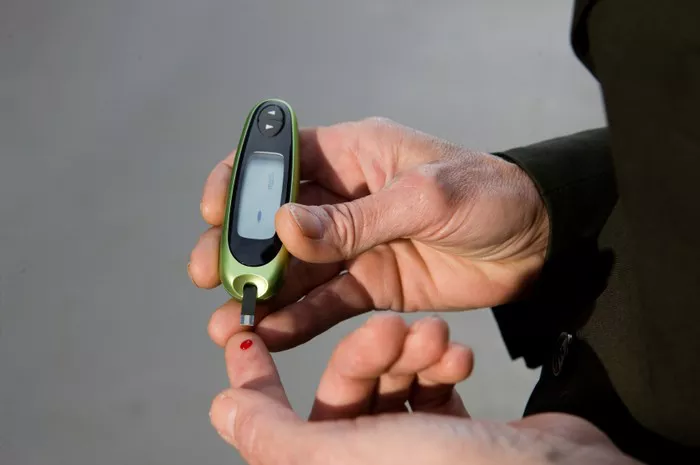Prediabetes, a condition characterized by higher than normal blood sugar levels, serves as a warning sign for the development of type 2 diabetes.
However, with the right diet and lifestyle modifications, individuals with prediabetes can delay or even prevent the onset of diabetes.
In this article, we’ll explore the best prediabetes diet plan, offering valuable insights and practical tips for managing blood sugar levels and improving overall health.
Understanding Prediabetes
Prediabetes occurs when blood sugar levels are higher than normal but not yet high enough to be diagnosed as type 2 diabetes.
It’s estimated that over 88 million American adults have prediabetes, placing them at increased risk of developing diabetes and other serious health complications, such as heart disease and stroke. However, prediabetes is reversible with appropriate lifestyle changes, including diet and exercise.
The Role of Diet in Prediabetes Management
Diet plays a crucial role in managing prediabetes by helping to control blood sugar levels, promote weight loss, and improve insulin sensitivity. A balanced diet rich in nutrient-dense foods can help individuals with prediabetes achieve and maintain optimal health. Let’s explore the key components of the best prediabetes diet plan:
1. Emphasize Whole, Unprocessed Foods
Focus on consuming whole, unprocessed foods that are rich in nutrients and fiber. These include fruits, vegetables, whole grains, legumes, nuts, seeds, lean proteins, and healthy fats.
Avoid or limit highly processed and sugary foods, such as sweets, sugary beverages, refined grains, and processed snacks, as they can cause rapid spikes in blood sugar levels.
2. Choose Low-Glycemic Index Foods
Incorporate low-glycemic index (GI) foods into your diet, as they are digested more slowly and cause gradual increases in blood sugar levels.
Examples of low-GI foods include non-starchy vegetables, whole grains, legumes, and most fruits. Limit high-GI foods, such as white bread, white rice, and sugary cereals, which can cause sharp spikes in blood sugar levels.
3. Control Portion Sizes
Be mindful of portion sizes to prevent overeating and promote weight loss. Use measuring cups, spoons, and food scales to accurately portion out foods, and pay attention to serving sizes listed on food labels. Eating smaller, more frequent meals throughout the day can also help stabilize blood sugar levels and prevent hunger-induced overeating.
4. Include Protein with Every Meal
Incorporate lean proteins, such as poultry, fish, tofu, beans, and lentils, into each meal and snack. Protein helps promote satiety, stabilize blood sugar levels, and support muscle growth and repair.
Aim to include a source of protein with every meal and snack to help balance your blood sugar levels throughout the day.
5. Limit Added Sugars and Refined Carbohydrates
Minimize your intake of added sugars and refined carbohydrates, which can cause rapid spikes in blood sugar levels and contribute to insulin resistance. Read food labels carefully to identify hidden sources of sugar in packaged foods, and opt for whole, unprocessed alternatives whenever possible. Choose complex carbohydrates, such as whole grains, fruits, and vegetables, which provide sustained energy and essential nutrients.
6. Stay Hydrated
Drink plenty of water throughout the day to stay hydrated and support overall health. Limit your intake of sugary beverages, such as soda, fruit juice, and sweetened teas, which can contribute to excess calorie intake and blood sugar fluctuations. Opt for water, herbal teas, or sparkling water with a splash of lemon or lime for added flavor.
7. Practice Mindful Eating
Practice mindful eating by paying attention to hunger and fullness cues, eating slowly, and savoring each bite. Avoid distractions, such as television or smartphones, while eating, and focus on enjoying your food and the experience of dining.
Mindful eating can help prevent overeating, promote better digestion, and foster a healthy relationship with food.
Developing Your Prediabetes Meal Plan
Creating a personalized prediabetes meal plan is essential for achieving and maintaining optimal blood sugar levels and overall health. Work with a registered dietitian or healthcare provider to develop a meal plan that meets your individual needs, preferences, and goals.
Your meal plan should include a variety of nutrient-dense foods, balanced meals and snacks, controlled portion sizes, and regular monitoring of your blood sugar levels.
Sample Prediabetes Meal Plan
Here’s a sample prediabetes meal plan to help you get started:
Breakfast:
- Overnight oats made with rolled oats, almond milk, chia seeds, Greek yogurt, and mixed berries
- Whole grain toast topped with avocado slices and a poached egg
- Spinach and feta omelet with cherry tomatoes and whole grain toast
Lunch:
- Quinoa salad with mixed greens, grilled chicken
- breast, cucumbers, cherry tomatoes, and balsamic vinaigrette
- Turkey and vegetable wrap with whole grain tortilla, lettuce, tomato, cucumber, and mustard
- Lentil soup with a side of mixed greens and whole grain crackers
Dinner:
- Baked salmon with roasted sweet potatoes, steamed broccoli, and a side salad with lemon vinaigrette
- Stir-fried tofu with mixed vegetables, brown rice, and a drizzle of teriyaki sauce
- Grilled chicken breast with quinoa pilaf, sautéed spinach, and roasted carrots
Snacks:
- Apple slices with almond butter
Carrot sticks with hummus
Greek yogurt with mixed berries and a sprinkle of granola
Conclusion
Crafting an effective prediabetes diet plan is a powerful tool for managing blood sugar levels, promoting weight loss, and improving overall health. Remember to consult with a registered dietitian or healthcare provider to develop a personalized meal plan that meets your specific needs and goals.
























